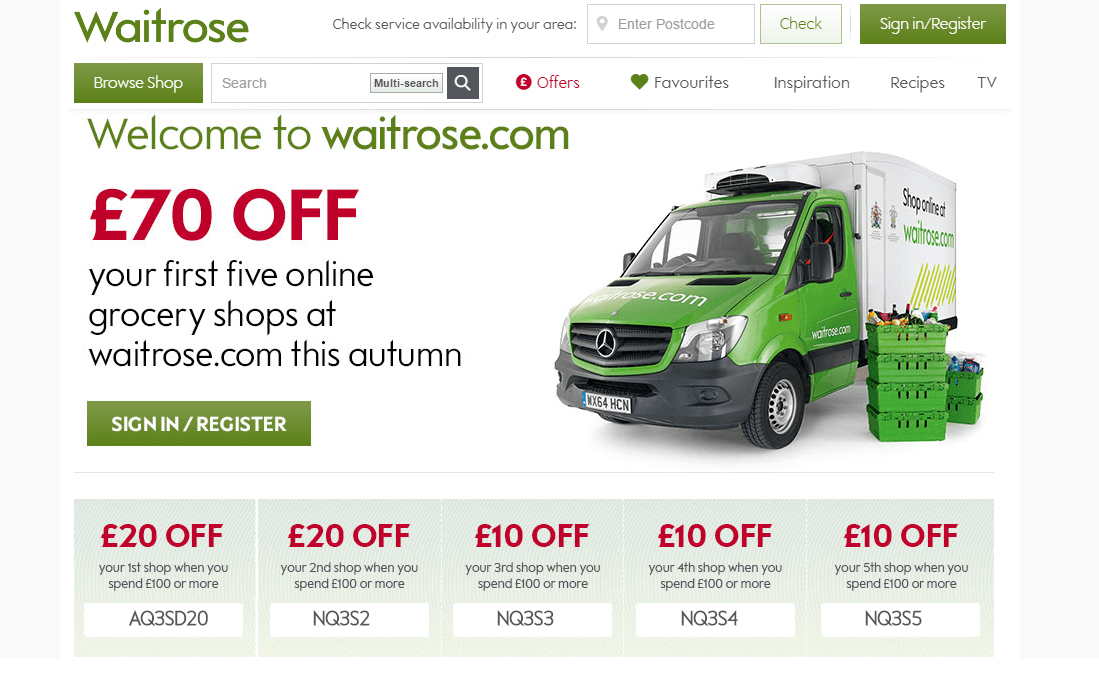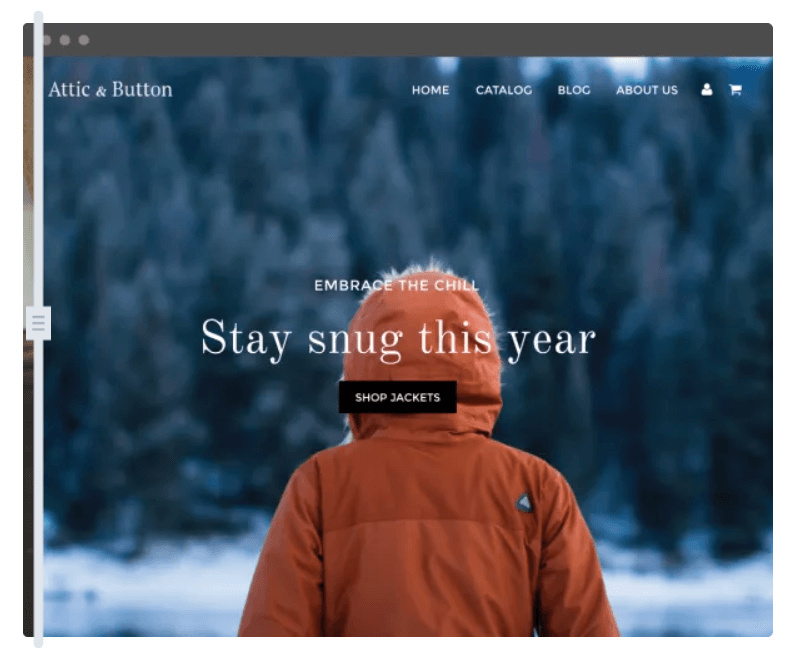Website personalization, first thought of as hype and just another marketing buzzword, has proved to be a sound strategy delivering significant benefits to organizations operating in the digital landscape. It’s not a choice anymore. Instead, it’s become a standard path to higher conversion rates, enhanced customer experience, and improved engagement.
But what, exactly, are we talking about?
Forget wordy definitions.
Simply put: it’s a way to give every visitor to your website a bespoke experience in real-time and based on their individual preferences.
This approach, fueled by behavioral, demographic, contextual, and other kinds of data, helps visitors break through the clutter and reach the content they really want.
Although personalization strategies have been in use for over a decade, they still present a significant challenge to implement and exploit.
IMPORTANT! As revealed by DynamicYield, more than 70% of companies struggle to make personalization work on their website.
You don’t want to belong to that crowd, so let us help you out. We’ve done the research, and in this post we’ll share some tips you can quickly and easily put to use.
Personalization is about getting to know your visitors/customers. Your goal is to make them feel welcome and let them navigate the site as easily as they walk around their house. Your website can be your best strategic marketing channel if you succeed in aligning it with visitors’ preferences.
Meet your visitors
Your first step is to gather data that tells you more about your visitors. They need just seconds to decide if they like your content or not. That’s why it’s vital to make your message resonate with them from the first interaction with your website.
Defining who you are personalizing for and then creating the right audience should be the starting point for your campaign. You need to know who comes to your site, what they want from it, and when and how they want to get it.
Craft your segments
Website personalization strategy requires two key elements, targeting and segmentation. They perfectly go hand in hand. If you want to respond to each visitor individually, target them with the right message, you need to master segmenting your audience.
Fortunately, an individualized approach to visitors doesn’t require creating new content for every single one of them. That’s what segments are for.
First you gather the following kinds of data to better understand your users:
- Demographic
- Behavioral
- Contextual
- Device- or location-specific
Then you group them according to their likes, requirements, interests, and habits. This means arranging them into segments. Eight segments is usually a good number if you’re just starting your personalization journey. Segments give you a thorough understanding of how distinct subsets of your audience respond to various content.
This is also a way to help visitors wade through oceans of irrelevant information. For example, you can use product recommendations to suggest similar items or complementary offers. It shows customers that you are catering to them instead of just collecting data for your own purposes.
However, don’t get carried away with dividing up your audience. If you slice it too thin, you might keep visitors out of nooks and corners of your website that might interest them.
Want to know more about creating segments for your marketing campaigns? Check out our post: 6 Key Questions About Rule-Based Personalization, Answered.
Clearly distinguish user experiences
The foundation of website personalization is relevance. This means being ready to respond to your visitors’ signals with an individualized message. Therefore, you need to differentiate between users and the experiences you provide.
Taking advantage of precise segments and user profiles allows you to serve welcome messages to newcomers inviting them to contact your company, or give them a detailed onboarding guide.
On the other hand, you can also cater to returning visitors. Make them feel special with an exclusive offer for a related product or service. This helps you build trust and brand loyalty.
Make it all about your visitor
When you polish your site and craft your content, the user experience should serve as a guiding light. Include the four principles of UX – remember, understand, help, surprise / delight – in your website personalization campaign for better results. There are some key questions you need to answer:
- Has a given visitor been here before?
- Where are visitors in their customer journey?
- Why are they coming to your site?
- How does your website serve visitors?
- Can visitors find what they’re looking for?
That’s just the tip of the iceberg. Every business is different and the questions you need to ask can differ. Start with these as your roadmap to creating personalized content as you build your website for your customers.
Personalize on-site search
The search engine on your site is a important source of information on visitors and shoppers. Understanding search data helps you make accurate predictions about what products and services might match visitors’ interests and preferences.
Besides that, search entries are first-party data of your customers, the most valuable data for marketing personalization. It’s the most accurate, because visitors submit it themselves. It is also more convenient to handle in terms of privacy regulations. On top of all that, it enriches user profiles.
A personalized on-site search engine lets you adapt to individual customer needs and preferences. So when a visitor enters a search term, instead of showing them a long list of results or redirecting them to another site, you can provide them with product recommendations tailored to their interests.
Here are the criteria you should consider for your site’s searches:
- price
- product details
- ratings
- availability
With this info, you can render personalized results supported by browsing or shopping histories. That opens the door not only to better tailored messages but also to up-selling offers and cross-selling products and other services.
Free Ebook: How to Improve the Digital Journey in Healthcare with Web Analytics & Personalization
Learn all the important aspects of optimizing the customer experience on your patient-facing platforms while remaining in full alignment with data privacy regulations (including HIPAA & GDPR)
Keep your eye on the prize
As website personalization requires a sound strategy and takes substantial resources, you need to make certain that you’re heading in the right direction. That means tracking the performance of your campaigns. To meet your business goals, you need to set KPIs for every campaign. While every business is unique and sets its own goals, there are some rather common ones in the context of personalization like:
- click-through per creative
- click-through conversion
- engagement
- conversion lift
- A/B testing reports for different content creatives and variations
- campaign performance for individual segments
- return on investment
Robust reports reflect how your campaigns are performing and help you make informed decisions. Successful campaigns mean that you can increase your budget and keep going in the same direction. Conversely, poor ones signal a need for improvement that could involve adjusting your content, redesigning segments, or maybe trying other new solutions.
Bring website personalization into play
Needless to say, marketing personalization is not just about recognizing visitors and putting their name into your pop-ups and banners. With technological advancement and a pinch of creativity you get unlimited options to serve individualized content that truly resonates with each visitor’s preferences.
Since we’ve already dropped some hints about good practices, it’s now time to see a few of them in action. Let’s get started!
Reward loyal customers
Acquiring a new customer is a rather costly business. Often it’s better to nurture the relationship you have with those who have already made some purchase. Do this with price cuts or by promoting special offers. For instance, Waitrose provides their loyal shoppers with a discount on their first 5 orders.

Tailor content to the visitor’s location
Geolocation data is perfect for recognizing where a visitor is browsing the site from and to grasp what they might need. A perfect example is Attic & Button. They display jackets and sweaters to shoppers from cold weather locations.

Create persona-specific content
Help visitors navigate your site. Create experiences tailored for people in various professional positions. When visitors land on your site, you let them choose their role and direct them to another page that addresses their specific interests or needs. That’s exactly what Sales Benchmark Index did.

Get the most out of your data
The power of personalization lies in data, so employ all the information you have to create engaging content. Follow FashionWatch to see how effectively you can use various kinds of data. In this example, their visitor is a male from outside the USA who hasn’t purchased from the shop before, but has shown some interest in the Nixon brand.

Free Ebook: How to Improve the Digital Journey in Healthcare with Web Analytics & Personalization
Learn all the important aspects of optimizing the customer experience on your patient-facing platforms while remaining in full alignment with data privacy regulations (including HIPAA & GDPR)
Conclusion
Website personalization is a complex operation that may seem daunting at first. But when supported by the right tools and resources plus thorough planning, it becomes a powerful tool in the marketer’s arsenal. To achieve its full potential, marketing practices must be focused on adding value for visitors by speaking their language, meeting their needs, and helping them achieve their goals.
We hope the information and tips in this post come in handy and that we’ve supplied some valuable insights on personalization strategy. You might still have some questions because we’ve only covered some key issues. Don’t hesitate to reach out to us, our team will be glad to help!











